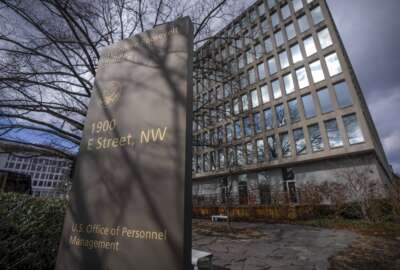In Depth interviews – July 10
On the In Depth show blog, you can listen to the interviews, find more information about the guests on the show each day and links to additional resources.
This is the In Depth show blog. Here you can listen to the interviews, find more information about the guests on the show each day and links to additional resources.
Today’s guests:
Hildy Ferraiolo — Scientist, Computer Security Division, NIST
|
|
More than 90 percent of federal employees have now been issued standardized smart ID cards under Homeland Security Presidential Directive 12 (HSPD-12). The cards are supposed to let users gain secure authentication into IT systems, and in some cases physical access into buildings, though agencies are in various stages of implementing those cards’ capabilities.
But those cards capabilities will evolve a bit under draft standards being proposed by the National Institute of Standards and Technology. You’d be able to remotely reset your PIN code, your card would store a digital image of your face for extra security and you’d even be able to migrate your security credentials onto your mobile device.
Tom Shoop — Editor-in-Chief, Government Executive
|
|
Even though telework participation is at an all-time high, agency participation still varies greatly.
But could there be a hidden reason why your agency does or does not encourage the practice? Tom Shoop, editor-in-chief of Government Executive recently wrote a column on the issue, titled “Trust and Telework.”
POLL: Who are the problem teleworkers?
George Tubin — Senior Security Strategist, Trusteer
|
|
Twelve people scattered around the world were arrested two weeks ago for credit card fraud via the Internet. It was the largest international move to catch people committing so-called “carding” crimes.
The move was coordinated by the FBI, but some people say it’s not a sign of safer days to come, according to a GovInfoSecurity.
George Tubin, a senior security strategist for the online security provider Trusteer, discusses why.
This story is part of Federal News Radio’s daily Cybersecurity Update. For more cybersecurity news, click here.
Brendan McGarry — Bloomberg Government reporter
|
|
In early June, Lockheed Martin, the Pentagon’s — and the world’s — biggest defense contractor, nabbed a missile contract worth more than $2 billion dollars from the Missile Defense Agency.
Bloomberg Government lists it as DoD’s biggest contract for June. In total, Lockheed locked down almost a third of the contract dollars DoD awarded for the month.
Brendan McGarry, a reporter at BGov covering this story, joins In Depth to discuss the contract.
This story is part of Federal News Radio’s daily DoD Report. For more defense news, click here.
Also on the show:
NIH official recognized for efforts to create AIDS-free generation
Causey: Nostradamus rides again!
Copyright © 2024 Federal News Network. All rights reserved. This website is not intended for users located within the European Economic Area.





